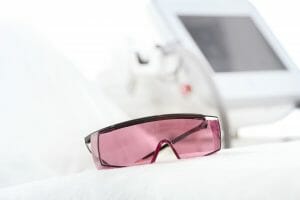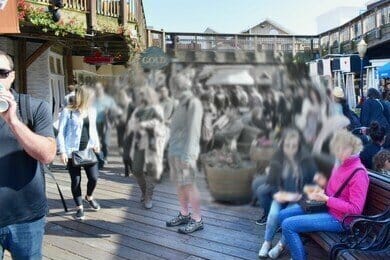Ultraviolet light is that part of the spectrum of invisible light that is below 286nm and goes up to 400nm. Ultraviolet light is generally considered to be harmful to the eyes. They can cause many eye problems like cataracts and age-related macular degeneration. Light causes damage to the retina in three ways; structural, thermal, and photochemical. The type of retinal damage depends on the exposure time, power level, and wavelength of the light.
Sources of Ultraviolet Light

The primary source of Ultraviolet light is the sun, but there are some other sources as well. These sources are welder’s flash, fluorescent lighting, video display terminals, high-intensity mercury vapour lamps, and xenon arc lamps.
Types of Ultraviolet Light
Ultraviolet light has three segments designated as A, B, and C; C being the least harmful and A being the most harmful to the eye.

- Ultraviolet segment C is below 286nm filters through the earth’s ozone layer.
- Ultraviolet segment B has a wavelength between 286nm and 320nm. It can cause sunburn and snow blindness. This UV light is absorbed by the cornea.
- Ultra-violet segment A with a wavelength between 320nm-400nm concerns eye care professionals a great deal as it is the most dangerous UV wavelength. It transmits to the crystalline lens of the eye and damages the eye.
Melanin and Harmful Ultraviolet Light
Melanin is a substance in the skin, eyes, and hair that absorbs harmful ultraviolet and blue light. It serves as the body’s natural sunscreen protection. More the amount of melanin in the body, the better protection it will provide against damaging light rays.
The level of melanin in our bodies decreases as we age. By the age of 65, about half of the melanin is gone, which increases the eye’s vulnerability, and eyes become more susceptible to diseases like macular degeneration.
Studies have shown that blue light increases the risk of age-related macular degeneration more than other wavelengths of the spectrum. Moreover, very bright lights like sunlight, reflection in the ocean, snow, or desert may aggravate macular degeneration.
Wearing sunglasses can save you from both Ultraviolet and blue light. Scientists have included synthetic melanin in our sunglasses to compensate for the loss of melanin with age. These sunglasses let the colors filter according to their potential of causing damage, which reduces the danger of macular degeneration.
Who Needs Protection from the Harmful Ultraviolet Light?
Those who spend a significant part of the day working or playing in the sun. For example, farmers, construction workers, sports participants and spectators, truck drivers, skiers, police officers, beachgoers, and lifeguards.
Moreover, those who take medications as there are some drugs on the market have a photosensitizing effect. These medications can be antibiotics, oral contraceptives, diuretics, tranquilizers, antibiotics, anti-hypertensive medications, anti-diabetic, and even artificial sweeteners like cyclamates.
Guide for Ultraviolet Protective Eyewear

Wearing protective eyewear is important to protect eyes from harmful ultraviolet light. Ultraviolet light is present on sunny days as well as on overcast or hazy days. Clear lenses can also be upgraded to provide protection from UV rays. Glasses, both sunglasses, and clear lenses can be coated with an invisible coating. The coating does not affect the color of the lenses.
False claims about certain glasses to UV protection can be easily confusing to consumers. For example, a pair of glasses might be declared UV absorbent, but it does not say how much UVB and UVA rays can block it.
It is recommended that sunglasses should be UV 400 absorbent. This range of spectrum extends into the visible spectrum to ensure total blockage of ultraviolet light. That’s what makes the expensive sunglasses different from the cheaper ones. Ask your eye care practitioner if your eyeglasses can block the UV light.
Blue Light

The scientific research implicates that blue light can contribute to macular degeneration and onset cataracts. However, there’s a difference between the blue light coming from the sun and that from electronic devices. The research results on the ability of sunglasses to block the blue light emitting from electronic devices are inconclusive and contradictory.
Various studies have verified the damaging effect of the blue light, but these findings tend to get bogged down by marketing campaigns. However, some studies have proven the effects of blue light on living eye tissue. It says that light energy is damaging only when it is 3 microwatts or greater. Usually, the light energy coming from the electronic devices is not greater than 1 microwatt.


